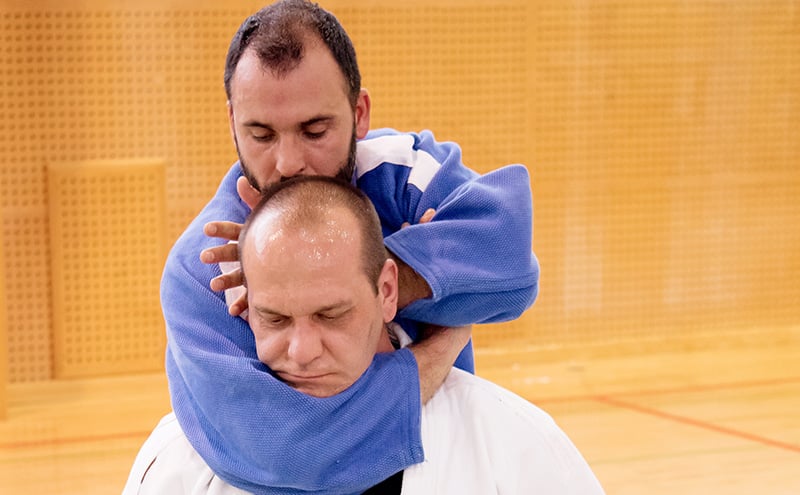
Physiology of Judo Choke
Given the popularity of mixed martial arts and other combative grappling arts such as judo and jujitsu where chokeholds are used to submit opponents, it is incumbent upon us as leading physicians to educate our colleagues, nurses, medics, EMTs, athletic trainers and others when we notice glaring errors in everyday thought.
In combative grappling, the term I’ll use for MMA, Judo, Jujitsu, Sambo (Russia), Shuai Jiao (China), and others “choke” holds are but one way to win a match with the others determined by the particular sport and ruling body. In MMA striking is allowed. In judo it is not. In jujitsu almost every joint may be locked. In judo only the elbow may be locked. In all of the combative grappling sports the “choke” holds require varying degrees of cervical spine protection.
The quotation marks surrounding the word “choking” are there for a purpose. The opponent is not really being choked. There is no disruption to his breathing. I have had friends talk to me while I was in the process of “choking” them in practice and at times returned the favor. As the “choke” hold progresses, both participants can follow the progression but only after gaining experience as the one applying the choke hold and the one being choked. While the symptoms vary from one judoka to another, common ones are a feeling of warmth in the face, tingling of fingers and buzzing in the ears, ultimately ending with the sound of snoring and vision narrowing in and growing darker. With this experience the fighter understands that he has time to attempt to escape from the chokehold and will use various techniques to do so. Some may not result in escape but will partially reset his system buying more time before he needs to tap out or becomes unconscious.
A common misunderstanding of this loss of consciousness is that it is the result of cerebral hypoxia. It is not! The actual physiology is well known to all emergency physicians as we frequently make use of it as a nonpharmacological treatment for the cardiac dysrhythmia SVT.
When the fighter applies pressure to the opponent’s neck it is done so in a manner that protects the spine from injury while placing pressure on one or both carotid arteries. This results in the opening of the carotid sinus where the additional pressure is interpreted as a severe hypertensive reaction. The brain receives this signal and sends the message via the vagus never to the heart and blood vessels, “Hey Buddy, you’re going to blow something we really need. RELAX!” Voila. Instant vagal reaction with bradycardia and hypotension culminating in transient loss of consciousness.
Of course, what makes repetitive chokes in combative grappling so safe is the health and conditioning of young martial artists. My college judo coach cautioned me to seriously consider allowing chokes in anyone over the age of 40. At the time I was in my 20’s and had no idea what the big deal was.
He also spoke of the 40-year syndrome. This is where you turn 40 and suddenly you have all the aches and pains from all the ways you abused yourself when you were young, whether with drugs, alcohol, athletics, manual labor or other factors, it doesn’t matter. He was a much wiser man than I realized.
Earl D. Morgan MD, FACFE
- Board Certified Internal Medicine, Forensic Medicine, Medical Acupuncture
- Isshinryu Karate 4th Degree Blackbelt
- Judo 1st Blackbelt
- Northern WuTai Chi Sifu and Disciple of Grand Master Li Bin Ci, Beijing China
- Cheung Style Bagua Sifu



